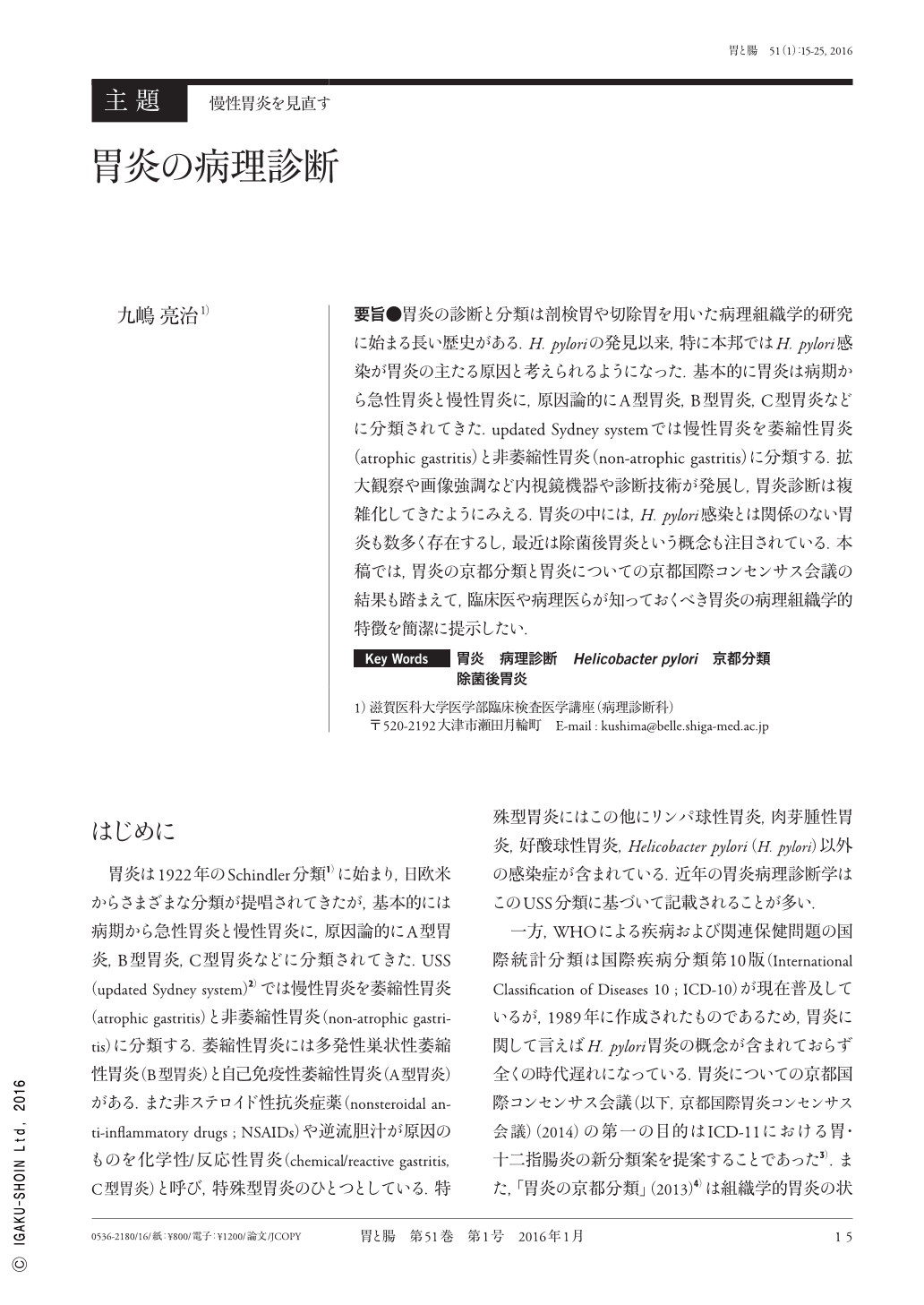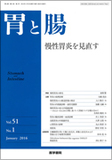Japanese
English
- 有料閲覧
- Abstract 文献概要
- 1ページ目 Look Inside
- 参考文献 Reference
- サイト内被引用 Cited by
要旨●胃炎の診断と分類は剖検胃や切除胃を用いた病理組織学的研究に始まる長い歴史がある.H. pyloriの発見以来,特に本邦ではH. pylori感染が胃炎の主たる原因と考えられるようになった.基本的に胃炎は病期から急性胃炎と慢性胃炎に,原因論的にA型胃炎,B型胃炎,C型胃炎などに分類されてきた.updated Sydney systemでは慢性胃炎を萎縮性胃炎(atrophic gastritis)と非萎縮性胃炎(non-atrophic gastritis)に分類する.拡大観察や画像強調など内視鏡機器や診断技術が発展し,胃炎診断は複雑化してきたようにみえる.胃炎の中には,H. pylori感染とは関係のない胃炎も数多く存在するし,最近は除菌後胃炎という概念も注目されている.本稿では,胃炎の京都分類と胃炎についての京都国際コンセンサス会議の結果も踏まえて,臨床医や病理医らが知っておくべき胃炎の病理組織学的特徴を簡潔に提示したい.
Diagnosis and classification of gastritis has a long history that begins in histopathological studies using stomachs resected by autopsy or surgery. Helicobacter pylori(H. pylori)infection has been considered to be the main cause of gastritis, especially in Japan. Gastritis has basically been classified into acute and chronic gastritis and etiologically into types A, B, and C. Updated Sydney system classifies it into atrophic and nonatrophic gastritis. With the development and improvement of the endoscopic equipment and procedures such as magnifying endoscopy and image enhancement, the diagnosis of gastritis is becoming more complicated. Some types of gastritis are not related to H. pylori infection; also, the status of gastric mucosa after eradication of H. pylori has been of interest. Considering the Kyoto classification of gastritis and the Kyoto global consensus meeting on H. pylori gastritis, the author briefly shows the representative histopathological findings of various types of gastritis that both clinicians and pathologists should understand.

Copyright © 2016, Igaku-Shoin Ltd. All rights reserved.


